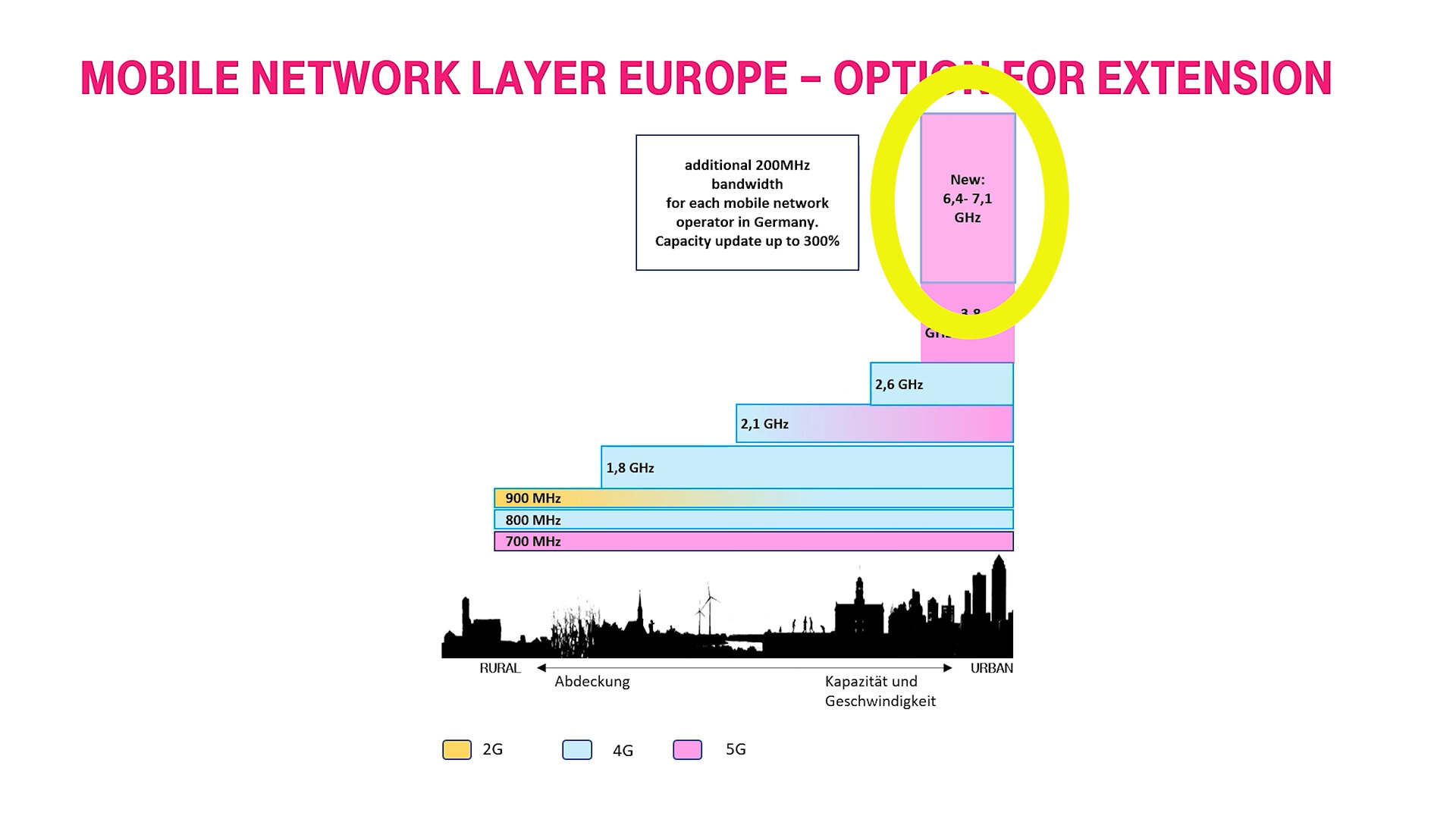The Federal Network Agency has granted Deutsche Telekom a test radio license to test 5G in the frequency range from 6,425 to 7,125 MHz. According to the wishes of the German mobile network operators, each provider should receive an additional 200 MHz bandwidth in order to provide higher 5G capacities in inner cities.
Deutsche Telekom is campaigning for the use of a new frequency range in the 6 GHz spectrum. The company last announced its interest in this area in April of this year, when the area below 700 MHz was proposed for future expansion across the board. The frequency range from 6,425 to 7,125 MHz, on the other hand, should provide additional capacities for 5G in urban areas. According to a graphic published by Deutsche Telekom, 200 MHz of additional bandwidth would then be available to Germany's three major network operators.
 Telekom is testing 5G in the 6 GHz band (image: Deutsche Telekom)
Telekom is testing 5G in the 6 GHz band (image: Deutsche Telekom)The 6 GHz band is the range from 5925 MHz to 7125 MHz, of which the first 500 MHz is intended for backhaul to connect cellular base stations. According to Driton Emini, who is responsible for the strategic planning of mobile communications at Telekom Technik GmbH, the 6 GHz band is used sporadically to connect mobile communications sites. In the future, these locations are to be connected via fiber optics. The upper 700 MHz are of interest for mobile communications.
Tests in Bonn reach up to 1.3 Gbit/s
The company is currently testing the 6 GHz band in three different scenarios on the Bonn campus. The test setup with an appropriately equipped smartphone prototype and a 6 GHz antenna at an existing macro site envisages connections in the immediate vicinity of the base station, from a few hundred meters away with a clear view of the antenna and an indoor measurement. As can be seen from the measurements in the video, Deutsche Telekom carried out the tests with a bandwidth of 80 MHz on the center frequency of 7,075 MHz and thus achieved around 1.3 Gbit/s in the downlink in the immediate vicinity of the location and 150 Mbit in parallel /s in the uplink. At a medium distance and indoor measurement, it was still 1.1 Gbit/s and also 150 Mbit/s.
Decision on WRC 2023
The network operator received a test radio license from the Federal Network Agency for the tests. According to Alexander Kühn, Head of Frequency Concepts at the Federal Network Agency, the findings of the project should help to ensure “the right decision” for the supply of Germany with broadband services at the World Radio Conference at the end of 2023. At the WRC-23 in Dubai, the split in the 6 GHz band at 6,425 MHz with use up to 7,125 MHz for IMT (International Mobile Telecommunications) in the so-called Region 1 will be up for debate. Region 1 covers Europe, Russia, the Middle East and Africa. Walter Godenits, Managing Director Technology at Telekom Germany, sees the successful tests in Bonn as the basis for a possible decision on WRC-23 on how and to whom the frequencies will be made available. He hopes that the telecom companies will receive them.